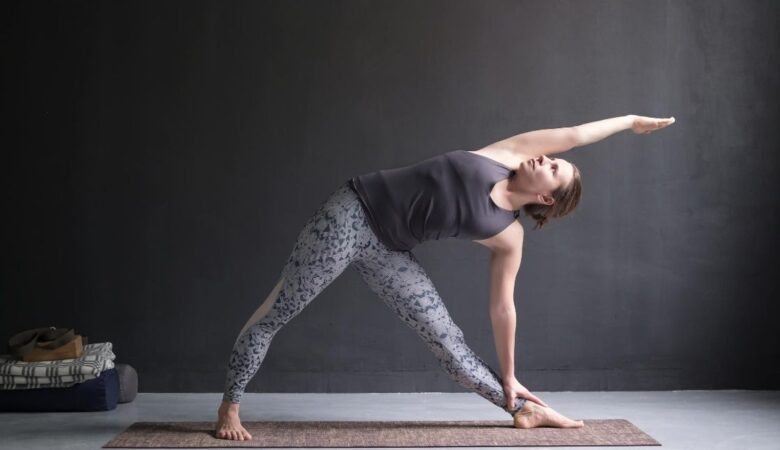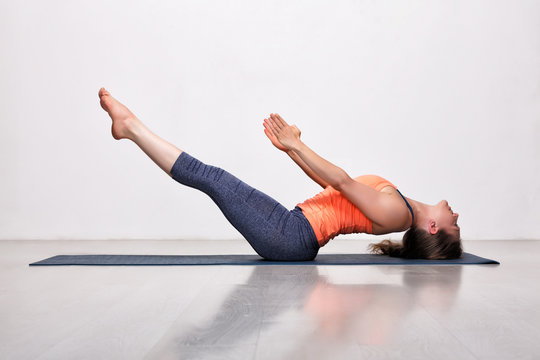Maha Bandha, meaning the “Great Lock,” is a powerful yogic practice that combines the three principal bandhas: Mula Bandha (root lock), Uddiyana Bandha (abdominal lock), and Jalandhara Bandha (throat lock). Practicing Maha Bandha helps control the flow of prana (vital life force) and awaken kundalini energy. It is considered a master technique in Hatha Yoga and Kundalini Yoga systems, intended for advanced practitioners who seek to transcend the physical and tap into subtle spiritual realms.
Table of Contents
What is Maha Bandha?
In Sanskrit, Bandha means “lock,” “closure,” or “binding.” Bandhas are energetic locks that manipulate the flow of prana within the body’s energy channels (nadis) by engaging specific muscle groups. When practiced with breath retention (kumbhaka), bandhas help redirect energy away from its habitual downward or outward movement and guide it inward and upward, particularly toward the spine and brain.
Maha Bandha = Mula Bandha + Uddiyana Bandha + Jalandhara Bandha
When these three bandhas are practiced simultaneously, they create Maha Bandha, or the “Great Lock.” This combined action is said to:
- Balance all three major energy channels (Ida, Pingala, Sushumna)
- Stabilize pranic energy in the body
- Awaken and raise kundalini shakti
- Support the attainment of samadhi (spiritual absorption)
The Three Bandhas Explained:
1. Mula Bandha (Root Lock)
- Location: Pelvic floor (perineum or cervix area)
- How to Do It: Gently contract the muscles of the pelvic floor, pulling them upward.
- Purpose: Prevents downward leakage of energy, grounds the body, and stimulates the Muladhara Chakra (root chakra).
2. Uddiyana Bandha (Abdominal Lock)
- Location: Abdomen (below the navel)
- How to Do It: After exhaling fully, draw the abdominal wall in and up under the rib cage.
- Purpose: Draws prana upward into the Sushumna Nadi and activates the Manipura Chakra (solar plexus).
3. Jalandhara Bandha (Throat Lock)
- Location: Throat (cervical region)
- How to Do It: Tuck the chin to the chest while lifting the sternum, lengthening the back of the neck.
- Purpose: Seals energy from escaping upward, balances the Vishuddha Chakra, and stabilizes mental focus.
How to Perform Maha Bandha:
Maha Bandha should be learned under the guidance of an experienced teacher. It’s best practiced on an empty stomach and after developing basic proficiency in each of the individual bandhas.
Step 1:
Use a stable meditative posture like Padmasana (Lotus Pose), Siddhasana, or Vajrasana. Keep the spine straight.
Step 2:
Fill your lungs comfortably, then exhale completely.
Step 3:
Exhale fully, then hold the breath out (Bahya Kumbhaka). Apply Mula Bandha: Contract the pelvic floor.
Apply Uddiyana Bandha: Draw the belly in and up (only after exhalation). Apply Jalandhara Bandha: Lower the chin toward the chest.
Step 4:
Maintain all three locks as long as is comfortable, without strain.
Step 5:
Release Jalandhara, then Uddiyana, then Mula. Slowly inhale and return to normal breathing. Start with 3–5 rounds, gradually increasing over time.
Benefits of Maha Bandha:
Maha Bandha is considered one of the most powerful energy-control techniques in yoga, with benefits at the physical, mental, and spiritual levels.
Physical Benefits:
Stimulates the endocrine system (especially pituitary, thyroid, and adrenal glands). Improves circulation and digestion. Strengthens pelvic and abdominal muscles
Energetic Benefits:
Opens and balances chakras. Purifies the nadis (energy channels). Facilitates the rise of kundalini.
Mental and Emotional Benefits:
Enhances concentration, clarity, and mental control. Promotes emotional balance and reduces anxiety. Helps overcome negative habits and thought patterns.
Spiritual Benefits:
Leads to pratyahara (withdrawal of the senses). Aids in achieving dhyana (meditation) and samadhi. Bridges the connection between individual and universal consciousness
Contraindications and Precautions:
While Maha Bandha is deeply beneficial, it is not suitable for everyone, especially without prior preparation.
Avoid Maha Bandha if you have:
- High blood pressure or heart disease
- Peptic ulcers or abdominal surgeries
- Glaucoma or eye problems
- Pregnancy or menstruation
- Neurological disorders
General Guidelines:
- Learn individual bandhas first before attempting Maha Bandha.
- Practice early in the morning on an empty stomach.
- Avoid straining or over-retaining the breath.
- Seek qualified guidance, especially if combining with advanced pranayama or meditation techniques.
Maha Bandha in Yogic Texts:
Ancient texts like the Hatha Yoga Pradipika, Gheranda Samhita, and Shiva Samhita all emphasize the importance of this in controlling the pranic flow and achieving liberation (moksha).
Conclusion:
Maha Bandha is a master technique in the yogic tradition, offering a gateway into higher states of awareness, spiritual transformation, and self-mastery. When practiced regularly and with reverence, it harmonizes all aspects of the self body, breath, mind, and soul aligning the practitioner with the cosmic rhythm of life.
FAQ:
Q. What is Maha Bandha?
A. Maha Bandha, or “The Great Lock,” is a yogic practice that combines the three primary energy locks Mula Bandha (root lock), Uddiyana Bandha (abdominal lock), and Jalandhara Bandha (throat lock) to regulate and channel pranic energy for spiritual awakening.
Q. Is Maha Bandha safe for beginners?
A. No. This is an advanced technique and should only be practiced after mastering the individual bandhas, Mula, Uddiyana, and Jalandhara. Beginners should first become proficient in breath control and basic bandha practice under qualified guidance.
Q. Can I perform Maha Bandha during menstruation or pregnancy?
A. No. This should be avoided during menstruation and pregnancy, as it involves strong abdominal and pelvic contractions and breath retention.
Q. How long should I hold Maha Bandha?
A. Hold the locks for as long as is comfortable and safe, starting with a few seconds (5-10 seconds) and gradually increasing over time. Do not strain or force breath retention.
Q. Can Maha Bandha be practiced with inhalation or exhalation?
A. This is generally practiced during Bahya Kumbhaka (breath retention after exhalation). The practitioner first exhales completely, applies all three bandhas, and holds them with the breath out.
Q. What is the spiritual significance of Maha Bandha?
A. This helps direct energy into the Sushumna Nadi, activating kundalini, and preparing the practitioner for higher states of meditation (dhyana) and samadhi. It symbolizes mastery over the physical and energetic body.
Q. How many rounds of Maha Bandha should I practice?
A. Start with 2-3 rounds, holding the locks gently and without strain. With time and guidance, you may gradually increase duration and repetition based on your capacity and purpose.





